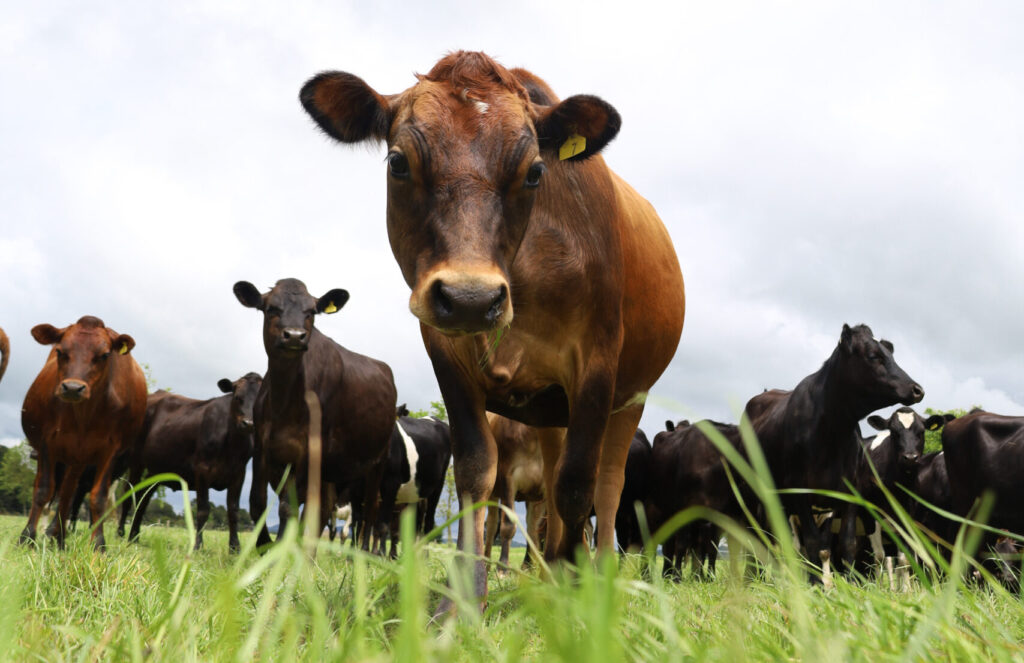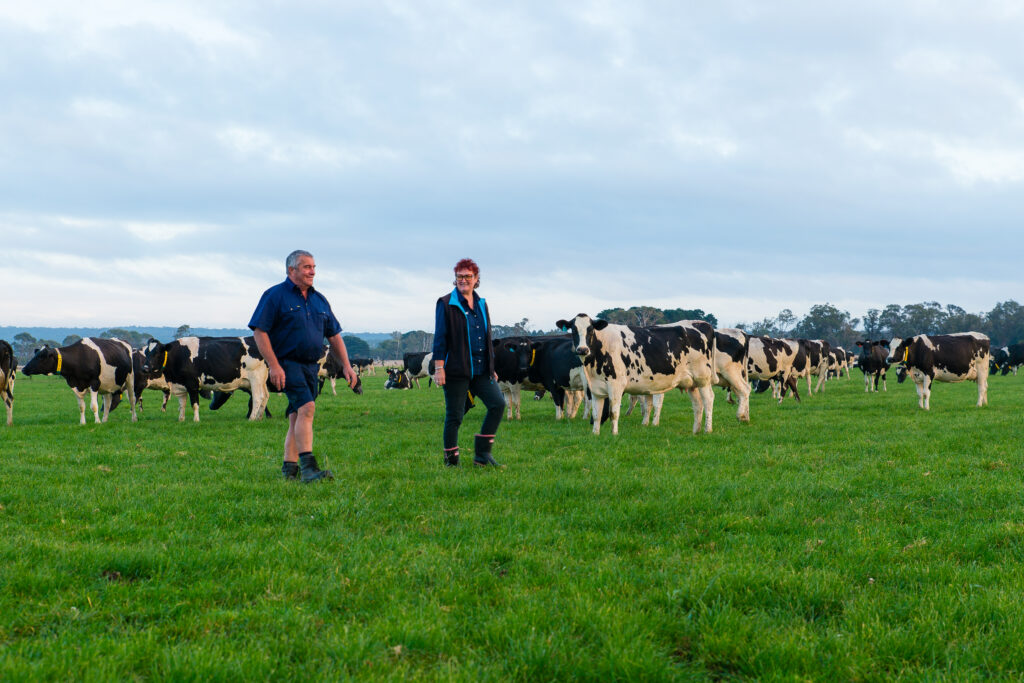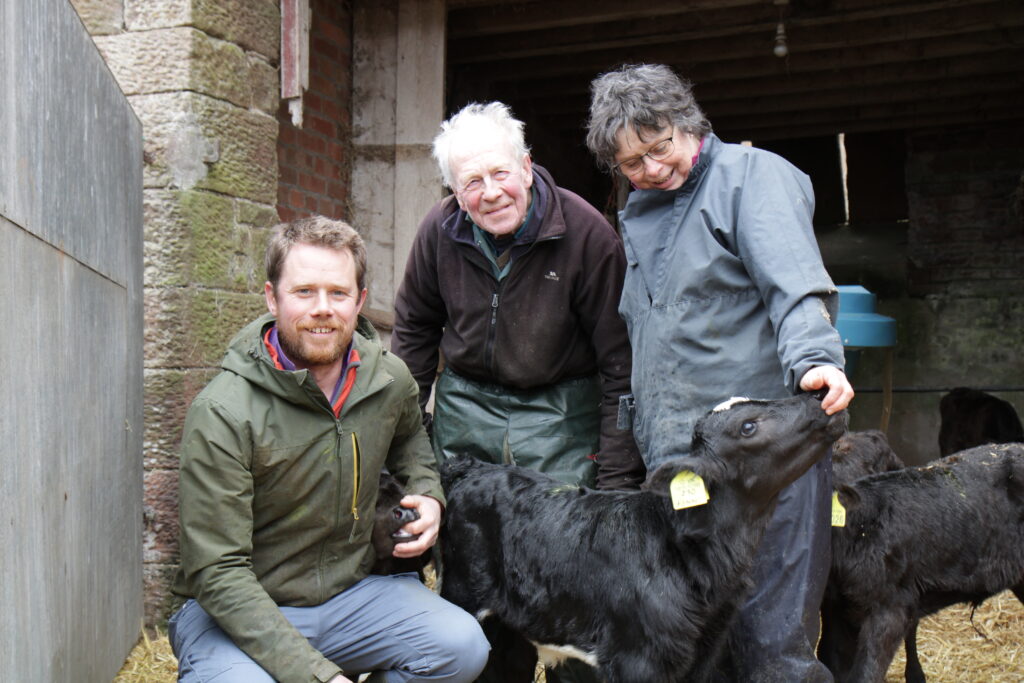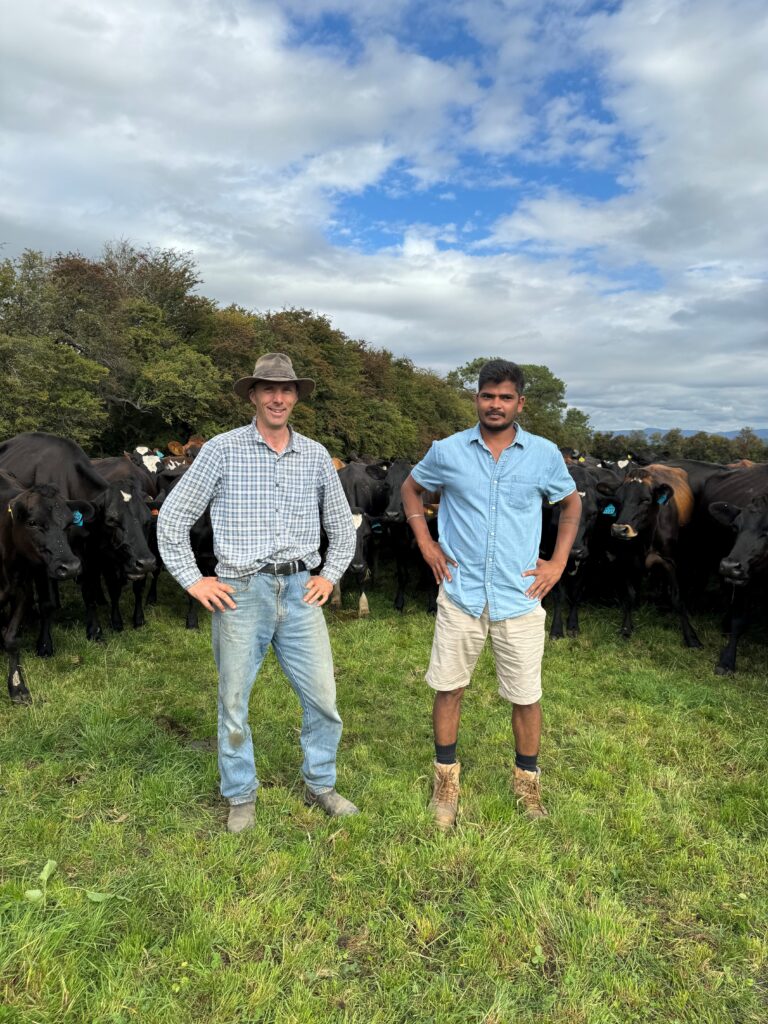During a time of huge change and reinvention on Simon Scott’s farm in south-west Victoria, Australia, one thing has remained steady – Simon has never strayed from LIC genetics.

Over recent years, Simon has shifted from conventional farming to organic and regenerative farming. He has also gone from split to seasonal calving, and from twice-a-day milking to three milkings in two days.
For the past 25 years, Simon has been loyal to LIC, and he has no plans to change.
“I’ve been happy with the cows and the service from LIC. They’ve got a good selection, so you get plenty to choose from,” he said.
“Their cows suit our system because we’re pasture-based, low-grain input, like New Zealand systems.”
Simon, who farms with his wife Linda and their five children, uses mostly Jersey and KiwiCross® bulls, with the occasional Friesian.
“A lot would be three-way cross, but we don’t have a specific plan,” he said.
“We’ve been using LIC exclusively for 25 years and have always had a cross-bred herd. I like the smaller cows because the farm gets pretty wet in winter and seems to handle smaller cows better than the bigger Friesians.”
“I look for a reasonable size, high components, low volume, good cell count cows and cows that can handle once-a-day milking.”
Simon has been breeding in anticipation of a change to his milking routine. “Being able to handle once-a-day milking is a trait we select,” he said. “I had it in the back of my mind and had been building up to that for a few years. I wanted a versatile animal that you could milk, once, twice, or whatever, and LIC was able to deliver that.”
In April, Simon hosted LIC FarmWise New Zealand based farm consultant Brent Boyce as part of an Australian tour organised by LIC. The tour had support from the DemoDAIRY Foundation to discuss flexible milking options.

Benefiting from a simpler system
Simon is the third generation on his farm and he bought the last parcel of land two years ago from his father, Lionel.
Until two years ago they were conventional farmers, peaking at 600 cows with a cow to the acre, a lot of out paddocks and up to four staff.
“We made the transition to regenerative, and we also went organic,” Simon said. “This year we will peak at about 230 cows on 680 acres, but we’ll probably move up to 280 next year. We also run 50 beef cows.
“The first couple of years of the transition was tough but it’s good now and improving all the time and we’re going to stick with it. We’ve made a lot of changes and keep trying to work out what best suits the farm.”
Simon jokes that he’s made the massive changes because he’s lazy, but in reality, he wanted to have a simpler system that improved profit, was better for the land and the cows, and created lifestyle benefits.
While production has dipped a bit, profit has never been better thanks to cost savings and a healthy milk price.
Most of the land was cleared when the farm was bought by Simon’s grandfather and “Over the last 80 years they put fertiliser on like it was going out of fashion”.
The move to organic and regenerative farming has helped. “We’re building carbon in the soil,” Simon said. “The soil tests show us we’ve had paddocks go from about 4 per cent carbon to 7 or 8%, and all the nutrients are fine.”
“When we were conventional, we couldn’t get over three Brix in the plants, now we’re up to about 15.”
They have also reduced their land holding to run the more streamlined business.
Their new fertiliser program is liquid worm juice but no synthetics. It only costs about $2,000 a year for the whole farm compared to $100,000 which was previously spent on fertiliser.
“With the $100,000 we spent on fertiliser, when we turned it off, I used that money to buy extra hay and grain for that transition phase,” Simon said.
“When we were conventional and milking twice-a-day, we were putting out 200 units of nitrogen across the whole farm.”
Simon no longer cuts hay or silage and instead buys hay from a friend who is certified organic. “It adds to the fertility of the farm,” he said.
He has sold all his hay making equipment, significantly reducing stress levels around harvest time.
Traditional split calving was dropped, and Simon transitioned all the spring calving cows over to calve from February 22. “Going to once-a-year calving, it’s just set and forget,” he said.
Improving lifestyle and profits with flexible milking
The latest milestone change was introducing 3-in-2 milking just over a year ago, milking every morning at 7am and every second day at 4pm.
“When we first went from twice-a-day milking to three milkings-in-two days, we did it with the spring-calving cows,” Simon said. “We dropped about 5% production but we saved labour and electricity, which is a big killer. “We were getting just on 500 kgMS per cow, last year we got 430 and expect about the same this year, which I’m happy with.”
“We used to feed 2.5 tonne of grain but we’re back to 600-700 kg. When you weigh it all up, we’re not doing the production we were doing but we’ve cut the costs. I’m in the Dairy Farm Monitor Project. Our earnings per kilo before interest and tax last year were much higher than the average. Some of the other farms get big production, but at big cost.”
Originally with four staff, numbers have been cut to only one milker working an 11 day fortnight with five afternoons off.
Simon adds, “I don’t want to get up at 5 o’clock in the morning to milk cows. I talked with my LIC rep Mike Waite about lifestyle balance, and he suggested flexible milking hours.”
Simon also watched LIC videos to guide the change and followed farmer advice to cull any cows that have ongoing mastitis problems.
“Before going organic, I did a lot of research on once-a-day milking and watched LIC YouTube videos, which is the only place to get good info on it,” he said.
“Our fertility is good and the cows we have now are suited to our system.”
Simon may have more changes on the way. “3-in-2 has been good for 12 months but we may tweak it and go 11-in-7 or maybe 10-in-7 to have that consistent routine each week. At the moment we alternate weeks – one week 11 milkings, the next 10.
“The only thing I don’t like about 3-in-2 is that it changes every week which is difficult for planning.”
“I couldn’t go back to twice-a-day. I’ve got five kids and I want to have time to run around with them. If I look back on the last 20 years, I’ve missed out on a lot of that stuff.”
Read this article for more information on flexible/alternative milking regimes.



